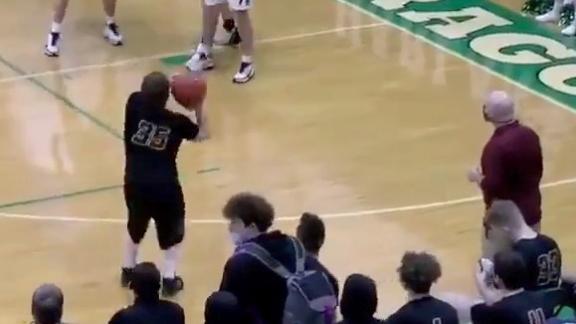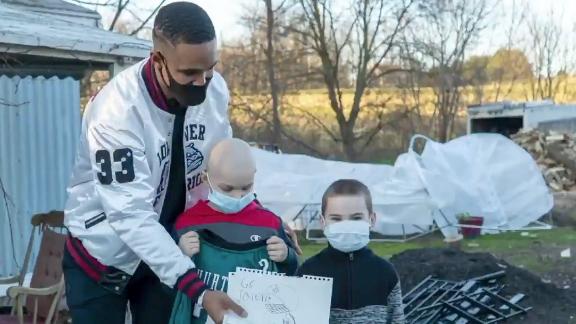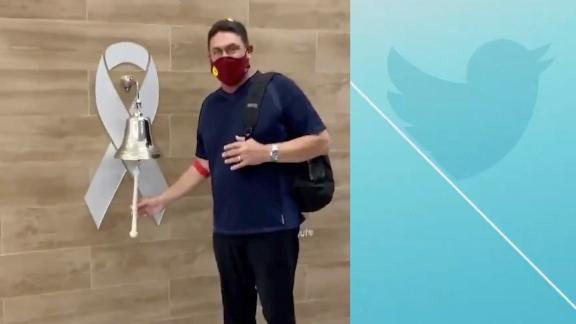There are things that can grind down your enthusiasm at the Olympics. Long hours. Long security lines. Long rides on buses that aren't always efficient or on time. Weather delays. The flu that invariably sweeps through the press room. Officious staff. Tardy press conferences.
Like some stellar athletes I just wrote about, this will be my fourth Winter Games. And when my spirit starts to flag, this will be my competitive mantra: What would John Husar do?
John would get the poop on the snow monkeys, that's what.
I had the good fortune to overlap with John at the Chicago Tribune for a few years in the late 1990s. He spent much of his 34-year-stint there as the outdoors columnist, but that doesn't begin to describe his range. John wrote hunting and fishing in such a way that you wanted to pull on camo and hip waders even if you didn't have the slightest interest in field and/or stream, but he was also a passionate conservationist. He had a discerning ear for the emotion that drives all great athletes, and an even keener eye for the absurd. He had the physical presence of a Kodiak bear, a deep, resonant voice, and a spare but elegant writing style.
John covered eight editions of the Olympics. His last one was in Nagano, Japan, in the winter of 1998, and he hit the ground running. Writers and photographers had been foraging for pre-Games stories and found one in the hills near the snowboarding venue: Adorable snow monkeys -- silver-furred macaques with the widest eyes and cutest little humanoid faces you've ever seen -- sitting chest-deep in steaming hot pools. It was exotic and telegenic and pastoral.
But John, an ardent observer of animal behavior, figured there might be more to the story. He tromped up there, all 6-foot-5 shambling bulk of him, and made some inquiries about the monkey spas. He discovered the chief reason the man-made pools were so popular with the perky primates.
"The warm, relaxing water triggers bowel movements in the monkeys," John wrote. He quoted the monkey park director: "They look nice, and the photographers love them, but those pools are nothing more than outhouses."
John concluded: "Remember that next time you're in Japan and a macaque monkey wants to share your outdoor bath. Try to keep your composure. Offer him a magazine."
Now, that's reporting.
It's easy for us journalists to slip into tunnel vision at the Olympics, but John never lost his delight with and curiosity about his surroundings. One of his favorite things to do was walk around and eat the most bizarre stuff he could find (in Nagano, he wrote an ode to asparagus cookies). In Lillehammer, Norway in 1994, he woke his roommate and colleague, columnist Bernie Lincicome, in the middle of the night to show him the aurora borealis.
At the 1988 Calgary Games, John tackled the tedium of the 10,000-meter speedskating event by chronicling how many other things he could do in the six hours between the time the first pair started and the last pair finished.
"He went to the bobsled, the ice dancing and a hockey game," Tribune writer Philip Hersh recalled in a posthumous tribute. "He took a nap on a tram and checked out the view from atop the bobsled run ... He ate some pizza, an ice cream rolled in chocolate and peanuts, spicy pork, vegetables and dumplings, a double espresso and a chocolate-banana bran muffin. He read a Sunday paper, visited an Olympic coin exhibition, peered into the pin traders' tent." And got back in time to cover the end of the 10K.
John would talk to anyone on the street no matter how high or low their station in life, and by the way, he always quoted them by name -- no anonymous and conveniently perfect quotes from "a fan" or "a passerby." He would cover anything and he could make any sport interesting. Check out this lede about the day a top U.S. bobsled team missed the podium in Nagano:
"As American four-man bobsled driver Brian Shimer stood beside the weighing house choking back tears for another failure, the French coach came streaking past, clad only in undershorts, boots and a cowboy hat. Both had lost their bets in Saturday's final heat."
There's just no way you can't read this rest of that story.
John was already sick that winter, although none of us working with him knew it at the time. His liver, damaged by hepatitis C he thought he might have picked up as a medic in the Army Reserve, was beginning to fail him. When he was placed on a liver transplant list, he wrote plainly and beautifully about that, too -- the pain of knowing that his life would only be saved at the expense of another family's tragedy, the agony of being put on "standby" when an organ looked like it might be available, only to be trumped by someone who was a better match or in greater need.
He was tired in Nagano, but that was understandable, since he was covering alpine and Nordic skiing and kept commuting up and down the mountain, a trip that could stretch to six hours some days, only to have weather postpone the competition. It was not a memorable fortnight for the U.S. ski team, which won only one medal in those two disciplines. Afterward, John torched them as a group, saying they were too content with mediocrity. He would have applauded Lindsey Vonn's cheery, resilient excellence, and he would have gotten a giant kick out of the fact that the United States has become a medal favorite in Nordic combined.
John finally got his liver transplant, but that big body was already too compromised to handle it. He died in July 2000 at age 63. At the Salt Lake Games less than two years later, snowboard racer Chris Klug, who was born with the same congenital liver disease that killed Chicago Bears great Walter Payton, became the first organ recipient to win an Olympic medal. John would have liked that too.
Dedications are tricky business. No way can I replicate John's unique takes on the world's biggest winter carnival. But I'd like to think that when my energy wanes in Vancouver, I'll get a second wind by reminding myself how much fun the big guy would be having if he were there.




